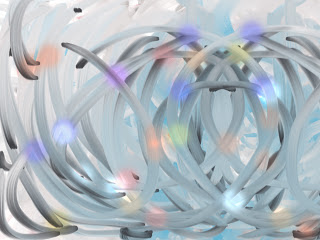It’s always crucial to demonstrate resilience if ever making mistakes, think, rethink, learn, relearn, move forward courageously, and lead to transformative changes step-wisely.
With rapid changes and continuous disruptions, either individually or collectively, people need to keep learning from the past, from others, and from all sorts of trustful resources to keep knowledge updated, sustain a positive mentality, and take initiatives to drive progressive movement proactively, rather than just adapting to changes reactively.
The value of resilience is how you respond to failure, and how you respond to setbacks is dependent upon what you learn from it; and how to make it a critical step in leading to ultimate success.
"Learning is a treasure that follows its owner everywhere." - It emphasizes the enduring value of knowledge and self-improvement: In the world of people-centricity, there is always one clear issue: the issue of self-people Awareness is at the level of the energetic connection between heart and mind. Knowing who you are or being self-aware, allows you to discover your talent and strength, keep learning to sharpen your skills, build dynamic capabilities, and become a better human being.
In practice, it’s so hard to look inward and make an objective assessment. But being self-conscious is the first step in making self-improvement. You sense yourself and become self-conscious. That's all you need to let your thoughts and actions work coherently; keep you motivated for self-improvement. Improvement is more likely to be sustained if there is a platform that takes an entire system-based approach.
"Fall seven times, stand up eight." It highlights the importance of perseverance and learning from setbacks. Failure is often viewed as falling backward instead of leaning forward. When you reframe the word "failure" to be more positive, you open the door to learning. The reality of failure is that it is also a way to learn. It takes a lot of time and energy to experiment, learn and relearn, show resilience to learn from failures; and demonstrate perseverance to keep pursuing goals without giving up too soon.
It’s important to gain a balanced viewpoint about failures and risks. Be positive and cautious at the same time. You can make a transition from failing bitter to failing better only if you learn from the failures, and then failing is something that prompts you to move ahead. Otherwise, you will go too far one way and become risk-averse, or go too far the other and fail too frequently without learning from it. Resilience helps individuals or organizations bounce back from setbacks. It's about being able to keep working and focusing, even during stress and disturbances
"They who learn but do not think is lost. They who think but do not learn are in great danger." It emphasizes the importance of both acquiring knowledge and applying it scientifically. Knowledge does not stand still but needs to be kept realigned, and refined to generate values. Knowledge could be stale sooner than what you thought about. It’s always important to learn new knowledge, think it through, and capture fresh insight from it.
Data, information, knowledge, and wisdom are the different stages of the information life cycle that we all need to manage effectively. Filter the information that comes your way, so you can build your knowledge foundation on topics that interest you. Different people use knowledge to do their activities informatively. Knowledge is the first step to gaining expert power, Only through multidimensional thinking, you can capture fresh insight, and apply knowledge to deal with a variety of problems effectively.
At the dawn of the digital era, global professionals and organizations need to shed the tendency to bridge differences, shape a holistic mindset to perceive a more complex and complete picture, to handle critical issues smoothly. It’s always crucial to demonstrate resilience if ever making mistakes, think, rethink, learn, relearn, move forward courageously, and lead to transformative changes step-wisely.

























































